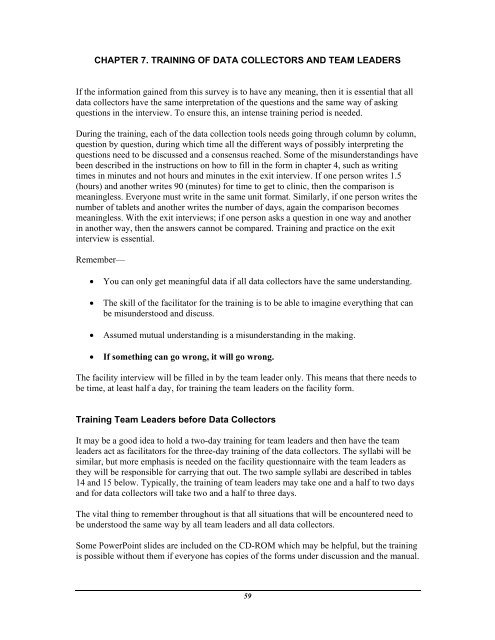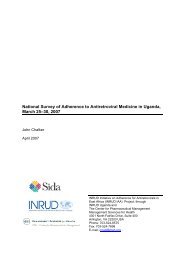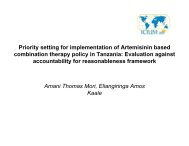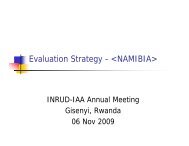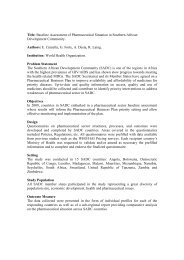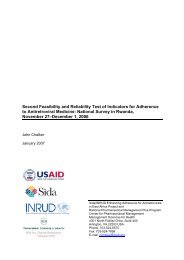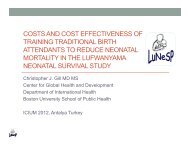How to investigate Adherence to Antiretroviral Treatment ... - INRUD
How to investigate Adherence to Antiretroviral Treatment ... - INRUD
How to investigate Adherence to Antiretroviral Treatment ... - INRUD
You also want an ePaper? Increase the reach of your titles
YUMPU automatically turns print PDFs into web optimized ePapers that Google loves.
CHAPTER 7. TRAINING OF DATA COLLECTORS AND TEAM LEADERS<br />
If the information gained from this survey is <strong>to</strong> have any meaning, then it is essential that all<br />
data collec<strong>to</strong>rs have the same interpretation of the questions and the same way of asking<br />
questions in the interview. To ensure this, an intense training period is needed.<br />
During the training, each of the data collection <strong>to</strong>ols needs going through column by column,<br />
question by question, during which time all the different ways of possibly interpreting the<br />
questions need <strong>to</strong> be discussed and a consensus reached. Some of the misunderstandings have<br />
been described in the instructions on how <strong>to</strong> fill in the form in chapter 4, such as writing<br />
times in minutes and not hours and minutes in the exit interview. If one person writes 1.5<br />
(hours) and another writes 90 (minutes) for time <strong>to</strong> get <strong>to</strong> clinic, then the comparison is<br />
meaningless. Everyone must write in the same unit format. Similarly, if one person writes the<br />
number of tablets and another writes the number of days, again the comparison becomes<br />
meaningless. With the exit interviews; if one person asks a question in one way and another<br />
in another way, then the answers cannot be compared. Training and practice on the exit<br />
interview is essential.<br />
Remember—<br />
• You can only get meaningful data if all data collec<strong>to</strong>rs have the same understanding.<br />
• The skill of the facilita<strong>to</strong>r for the training is <strong>to</strong> be able <strong>to</strong> imagine everything that can<br />
be misunders<strong>to</strong>od and discuss.<br />
• Assumed mutual understanding is a misunderstanding in the making.<br />
• If something can go wrong, it will go wrong.<br />
The facility interview will be filled in by the team leader only. This means that there needs <strong>to</strong><br />
be time, at least half a day, for training the team leaders on the facility form.<br />
Training Team Leaders before Data Collec<strong>to</strong>rs<br />
It may be a good idea <strong>to</strong> hold a two-day training for team leaders and then have the team<br />
leaders act as facilita<strong>to</strong>rs for the three-day training of the data collec<strong>to</strong>rs. The syllabi will be<br />
similar, but more emphasis is needed on the facility questionnaire with the team leaders as<br />
they will be responsible for carrying that out. The two sample syllabi are described in tables<br />
14 and 15 below. Typically, the training of team leaders may take one and a half <strong>to</strong> two days<br />
and for data collec<strong>to</strong>rs will take two and a half <strong>to</strong> three days.<br />
The vital thing <strong>to</strong> remember throughout is that all situations that will be encountered need <strong>to</strong><br />
be unders<strong>to</strong>od the same way by all team leaders and all data collec<strong>to</strong>rs.<br />
Some PowerPoint slides are included on the CD-ROM which may be helpful, but the training<br />
is possible without them if everyone has copies of the forms under discussion and the manual.<br />
59


